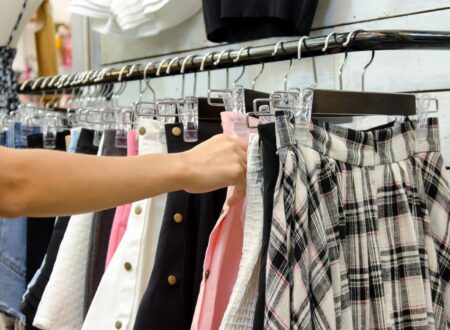Introduction to Sustainable Fashion
Fashion is an ever-evolving way to express ourselves, but have you stopped to consider the impact your wardrobe choices have on the planet? With climate change and environmental concerns at the forefront of global conversations, sustainable fashion has emerged as a vital movement. It’s not just about looking good; it’s about feeling good knowing that your style decisions contribute positively to our world.
Gone are the days when eco-friendly meant sacrificing style. Today, we can embrace chic outfits while being mindful of our ecological footprint. Whether you’re a trendsetter or someone who enjoys timeless pieces, there’s room for everyone in this new era of responsible fashion.
So, how do you navigate through this stylish yet conscious landscape? Let’s explore what sustainable fashion truly means and discover ways to curate a wardrobe that reflects both your personality and values—because making thoughtful choices never goes out of style!
The Environmental Impact of Fast Fashion
Fast fashion has transformed the clothing industry, but it comes at a steep cost to our planet. The rapid production of inexpensive garments leads to massive waste. Millions of tons of clothes end up in landfills each year, decomposing and releasing harmful greenhouse gases.
Water consumption is another critical concern. Producing a single cotton T-shirt can require over 2,700 liters of water—enough for one person to drink for nearly three years. Many fast fashion brands utilize toxic dyes and chemicals that pollute waterways, harming aquatic life.
Moreover, labor-intensive manufacturing often occurs in countries with lax environmental regulations. This results in unchecked pollution and exploitation of natural resources.
As consumers buy more frequently and discard quickly, this cycle intensifies. Understanding these impacts encourages us to rethink our shopping habits and seek alternatives that prioritize the earth’s health while still allowing for personal expression through style.
Benefits of Choosing Sustainable Fashion
Choosing sustainable fashion goes beyond just looking good. It’s a conscious decision that has far-reaching benefits.
One significant advantage is the positive impact on the environment. Sustainable practices reduce waste and pollution, helping to conserve precious resources.
Additionally, many sustainable brands prioritize ethical labor practices. This means supporting fair wages and safe working conditions for garment workers worldwide.
Sustainable fashion also encourages creativity and individuality in style. With unique pieces often sourced from independent designers, your wardrobe can become a true reflection of who you are.
Moreover, investing in quality over quantity leads to longer-lasting clothing items. You’ll spend less time shopping for replacements and more time enjoying what you already own.
Embracing this movement fosters community awareness about environmental issues and responsible consumption—an inspiring shift toward collective action for our planet’s future.
Tips for Building a Sustainable Wardrobe
Building a sustainable wardrobe starts with evaluating your current closet. Take time to identify pieces you love and wear frequently. This helps in understanding your personal style.
Investing in quality over quantity is key. Choose timeless designs made from eco-friendly materials that last longer than fast fashion items. Look for organic cotton, bamboo, or recycled fabrics.
Consider versatility when shopping. Pieces that can be styled multiple ways are worth their weight in gold. A simple dress can transition from day to night with the right accessories.
Don’t shy away from second-hand options. Vintage shops and online resale platforms offer unique finds while reducing waste.
Keep an eye on brands committed to sustainability practices. Research companies that prioritize ethical production methods and transparent supply chains; they make conscious consumerism easier than ever before.
Brands and Stores that Promote Sustainable Fashion
Many brands today are stepping up to embrace sustainability. They focus on ethical production methods and environmentally friendly materials.
Patagonia is a standout in this movement. Their commitment to repairing and recycling products makes them a leader in sustainable outdoor wear. Plus, they donate time and money to environmental causes.
Everlane takes transparency seriously. With their “Radical Transparency” approach, they show customers the true cost of each item, from materials to labor. This honesty builds trust while promoting responsible consumption.
Reformation is another brand making waves with trendy styles made from eco-friendly fabrics. They prioritize reducing waste throughout their production process.
For those who love luxury, Stella McCartney offers high-end fashion without compromising ethics or style. Her collections are crafted using innovative sustainable practices that challenge traditional norms.
Whether you’re into casual wear or designer labels, these brands prove that looking good doesn’t have to harm the planet.
Thrift Shopping and Upcycling as Sustainable Options
Thrift shopping is like a treasure hunt. Every visit holds the promise of unique finds that tell stories. You can discover vintage pieces or classic items that add character to your wardrobe without contributing to mass production.
Upcycling takes this concept further. It’s about transforming old clothes into something fresh and exciting. A worn-out denim jacket can become a stylish bag with just a little creativity.
Both options reduce waste and lower your carbon footprint. When you choose pre-loved clothing, you’re also encouraging sustainable practices within the fashion industry.
Plus, thrifted outfits often spark conversations. They showcase individuality in an age of conformity, allowing personal style to shine through in meaningful ways.
With each purchase, you’re making a statement—one that values sustainability over fleeting trends while embracing originality at every turn.
How to Incorporate Sustainable Practices in Your Daily Life
Incorporating sustainable practices into your daily life can be simple and fulfilling. Start by evaluating your wardrobe. Choose versatile pieces that mix and match easily, reducing the need for excessive clothing.
Consider fabric care too. Washing clothes in cold water and air-drying them can extend their lifespan while saving energy.
When it comes to shopping, opt for brands committed to sustainability or buy secondhand whenever possible. This not only supports eco-friendly businesses but also keeps unique styles alive.
Mindful consumption is key—resist impulse buys by creating a list before you shop.
Don’t forget about accessories; support artisans who use recycled materials for bags or jewelry.
Educate those around you about sustainable fashion choices—your enthusiasm might inspire others to join the movement towards a more conscious lifestyle.
Conclusion: Making a Difference with Your Fashion Choices
Every choice we make has an impact, and fashion is no exception. By opting for sustainable clothing, you are actively participating in a movement that prioritizes the health of our planet. It’s not just about looking good; it’s about feeling good knowing your wardrobe reflects your values.
Embracing sustainable practices can start small—perhaps by choosing eco-friendly brands or exploring thrift stores for unique finds. Each piece you acquire tells a story, one that often comes with less environmental harm than conventional fast fashion choices.
Remember that every little decision counts when it comes to sustainability. Your wardrobe can be both stylish and responsible, proving that fashion doesn’t have to come at the cost of our planet’s future. As more people become aware of their purchasing power, we create demand for ethical alternatives.
So here’s to making thoughtful decisions in our everyday lives through sustainable fashion options! Whether you’re revamping your closet or simply being mindful of what you buy next time you shop, remember: change starts with us.





